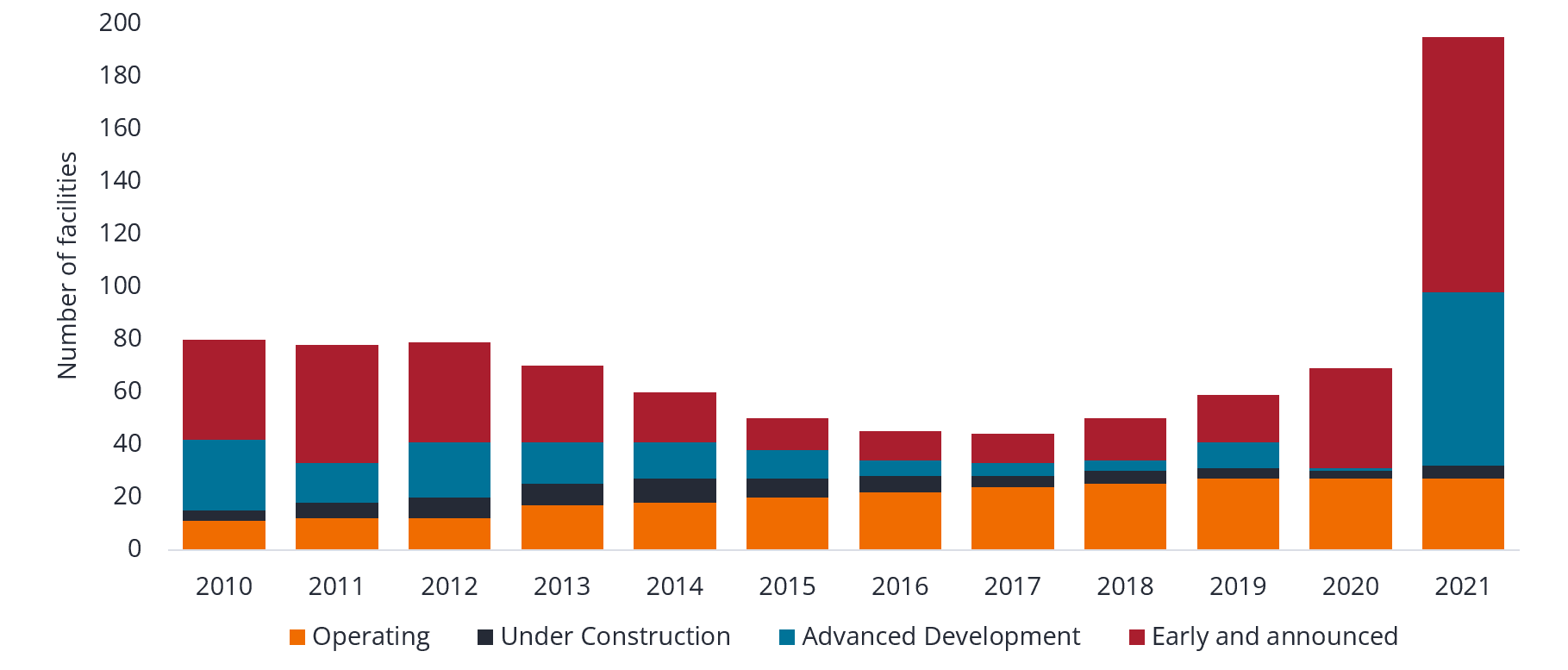Introduction
Despite advancing renewable energy technology and adoption, fossil fuels remain pervasive. Coal-fired power is still the world’s largest source of electricity generation and carbon emissions. To meet the world’s net zero targets, new technologies will be needed to rapidly reduce emissions and carbon capture, utilisation and storage is one solution gaining significant traction.
How carbon capture, utilisation and storage can help
Carbon capture, utilisation and storage (CCUS) is an emerging, yet rapidly advancing, set of technologies which involve the capture of CO2 and its use as a resource or storage deep underground. It is somewhat ironic that putting carbon back from where it came could actually be a significant means of cutting global industrial emissions, but in its 2020 report, the International Energy Agency declared that “reaching net zero goals without CCUS will be almost impossible”.
The carbon conundrum
Since the most recent global climate summit, COP26, over 40 countries have pledged to eliminate coal from their electricity sectors. However, demand for electricity access is still growing rapidly in many countries, with coal representing more than 60% of total global energy generation. In fact, 2021 was a record year for coal demand due to a strong global economic recovery from COVID-19.
CCUS technology can be retrofitted to existing coal power facilities, which will be essential for the many nations that will continue to rely on coal for the foreseeable future.
In addition to power plants, there are many other applications for CCUS, including in natural gas processing as well as heavy industry, including cement, petrochemical and steel production.
A promising outlook
CCUS is experiencing unprecedented growth. In 2021, more than 100 new CCUS facilities were announced, with project capacity quadrupling in the first nine months of the year.1 Governments worldwide are collectively investing more than US$14 billion into the CCUS sector2, and it’s estimated that up to US$90 billion could be invested globally over the next decade.3
Chart 1: Global pipeline of commercial CCUS facilities operating and in development
Source: IEA. As at November 2021.
CCUS projects are now operating or under development in 25 countries worldwide, with the United States and Europe accounting for three-quarters of the projects in development.4
In its 2020 report, the International Energy Agency suggested the achievement of the Paris Agreement and energy-related sustainable development goals would require around 2,000 CCUS facilities to be operating by 2040. Given it is the only group of technologies that can remove CO2 from the atmosphere, helping reduce the impact of unavoidable emissions, CCUS will be a key contributor to achieving a net zero future.
Invest in the transition to net zero
The Janus Henderson Net Zero Transition Resources Active ETF (Managed Fund) (ASX:JZRO) offers access to this multi-billion dollar investment thematic. It can invest in companies worldwide that are enabling the transition to a net zero carbon emission future, including those involved in CCUS.
ENDNOTES
1. Wood Mackenzie, Subsurface CCUS and low carbon energies: 5 things to look for in 2022
2. S&P Global, Government funds provide tailwind to CCUS growth outlook
3. The Business Case for Carbon Capture – BCG
4. IEA, Carbon capture in 2021: Off and running or another false start?
For important product information and disclosures such as PDS and TMD, please visit: https://www.janushenderson.com/en-au/investor/product/net-zero-transition-resources-fund/








